Unraveling the mysteries of the ancient Mayan civilization is like navigating through a labyrinth of enigmatic rituals and profound spiritual beliefs. Delving into the realm of sacrifice and rituals in Mayan mythology opens our eyes to a world rich in symbolism, significance, and reverence. From the depths of their jungle-clad cities to the summits of their pyramids, the Mayans left behind a legacy laced with sacrifice and ceremonies that stretched beyond mere mortal existence. Step into a world where daily life intertwined with the spiritual, where offerings to the gods held unimaginable power, and where mythological tales painted a vivid picture of the cosmic order. Welcome to the realm of sacrifice and rituals in Mayan mythology, where the sacred and the temporal merged in a dance of ancient wisdom and profound connection.
Contents
- The Mayan Spiritual World
- The Role of Sacrifice in Mayan Culture
- The Mythological Stories behind Sacrifice
- Mayan Rituals and Ceremonies
- Archaeological Evidence of Sacrifice
- The Legacy of Mayan Rituals
- Conclusion
-
Frequently Asked Questions
- 1. What were the core beliefs of the Mayan spiritual world?
- 2. How did the Mayans view celestial bodies?
- 3. What role did the sacred calendar play in Mayan spirituality?
- 4. How did the Mayans communicate with the gods?
- 5. What role did sacrifice play in Mayan culture?
- 6. What types of sacrifices did the Mayans perform?
- 7. What was the symbolism and purpose behind sacrifices?
- 8. Can you give examples of Mayan mythological stories related to sacrifices?
- 9. What were some common Mayan rituals and ceremonies?
- 10. What evidence of sacrifice can be found in Mayan archaeological sites?
- References
-
Frequently Asked Questions
- What were the core beliefs of the Mayans?
- What is the significance of sacrifice in Mayan culture?
- What were the different types of sacrifices performed by the Mayans?
- What was the purpose behind Mayan sacrifices?
- What role did rituals and offerings play in Mayan culture?
- What are the mythological stories associated with Mayan sacrifices?
- What was the significance of the sacred calendar in Mayan rituals?
- How did the Mayans celebrate the end of a cycle?
- What was the significance of pilgrimages and temples in Mayan culture?
- What evidence do we have today of Mayan sacrifices?
- References
- Read More
The Mayan Spiritual World
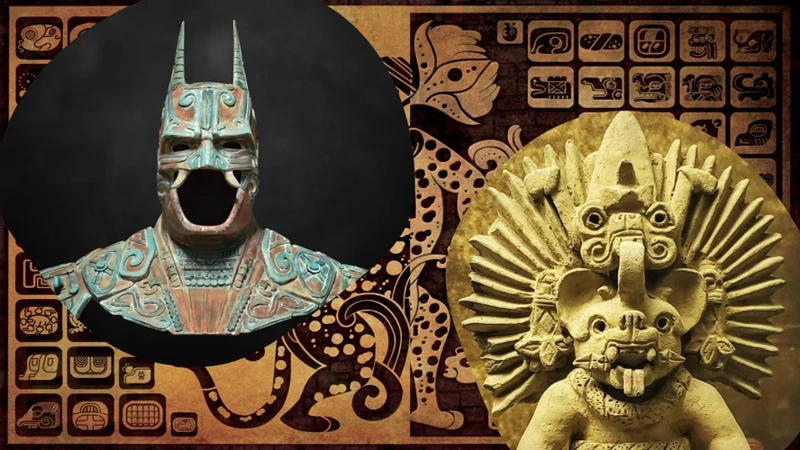
The Mayan spiritual world was a complex tapestry of beliefs and cosmology that permeated every aspect of their civilization. Central to their worldview was the concept of a multi-layered universe consisting of thirteen heavens above, nine underworlds below, and a middle realm that housed the earthly plane. At the heart of their cosmology was the belief that deities, known as the Maize Gods, had created humans from maize. This sacred connection between humans and maize underscored the importance of agriculture in Mayan society, with farming being viewed as a divine act. The Mayans also revered celestial bodies, viewing them as manifestations of deities and celestial events as signs of divine communication. The movements of the sun, moon, and planets were meticulously observed and recorded, and the Mayans possessed considerable astronomical knowledge. The celestial bodies held great significance in their rituals and ceremonies, as they believed they could communicate with the gods and receive guidance from the heavens. The Mayans believed that time was cyclical, and their sacred calendar played a crucial role in determining auspicious dates for ceremonies and rituals. From offering prayers and sacrifices to seeking guidance from the stars, the Mayan spiritual world was a vibrant tapestry of reverence and interconnectedness with nature and the cosmos.
Beliefs and Cosmology
In the realm of Mayan beliefs and cosmology, the ancient civilization possessed a rich understanding of the universe and its divine inhabitants. At the core of their cosmological beliefs was the belief in the existence of multiple realms, each with its own deities and distinct purposes. The Mayans believed in a hierarchical structure of thirteen heavens above, represented by celestial bodies, such as the sun, moon, and planets, which were considered manifestations of these deities. Additionally, they believed in nine underworlds below, inhabited by various gods associated with death and the afterlife. The middle realm, where humans resided, was seen as the bridge between the heavens and the underworlds, and the Mayans viewed themselves as sacred beings created by the gods. The deities played an integral role in Mayan cosmology, with each having specific domains and responsibilities. Tapping into the powers of these deities through rituals, sacrifices, and offerings was believed to bring harmony and balance to the world. The Mayans also believed in the cyclical nature of time, and their sacred calendar guided their daily lives, determining propitious moments for ceremonies, harvests, and other significant events. The interconnectedness between nature, celestial bodies, and human existence formed the foundation of Mayan beliefs and cosmology, symbolizing their deep respect for the divine forces that governed their lives.
The Role of Sacrifice in Mayan Culture
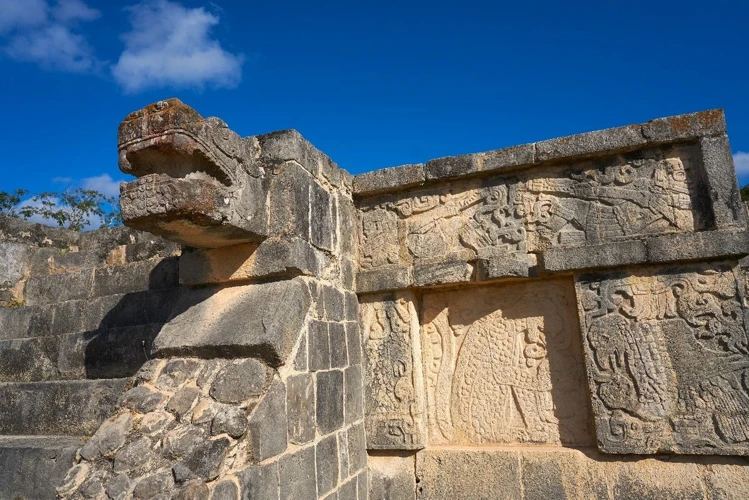
The role of sacrifice in Mayan culture was of utmost importance, serving as a conduit for communication between humans and the divine realm. Sacrifice was seen as a reciprocal act, a means of giving back to the gods for the blessings they bestowed upon the Mayans. It was believed that blood, particularly that of a living being, held potent life force energy that could nourish and sustain the deities. Different types of sacrifices were practiced, ranging from animal offerings to the most solemn and revered form: human sacrifice. The act of sacrifice was not solely focused on appeasing the gods but also aimed at maintaining cosmic balance and harmony. Symbolism and purpose were deeply intertwined in Mayan sacrifices. The spilled blood was seen as a means of renewing and fertilizing the earth, ensuring agricultural abundance. It was also believed to strengthen the sun god, whose vital energy sustained life on Earth. Rituals and offerings accompanying sacrifices involved intricate ceremonies, involving prayers, music, dance, and the burning of incense. These rituals were performed by skilled priests or shamans who acted as intermediaries between the mortal and divine realms. The Mayans believed that through these acts of sacrifice, they could access divine forces, gain favor from the gods, and ensure the continuity of their society. The significance and complexity of sacrifice in Mayan culture cannot be overstated, as it forged a profound connection between the physical world and the spiritual realm, shaping every facet of their existence.
Types of Sacrifices
The Mayans practiced various types of sacrifices as part of their religious rituals and beliefs. One form of sacrifice was bloodletting, where individuals would pierce their tongues, ears, or genitals with stingray spines or obsidian blades to offer their own blood to the gods. Blood was seen as a potent life force and a means of nourishing the deities. Another form of sacrifice involved the offering of animals, particularly turkeys or dogs, which were considered sacred animals in Mayan culture. These animals were ritually slaughtered and their hearts were extracted and offered to the gods. Human sacrifice, although controversial and debated among scholars, was also practiced by the Mayans. Higher-ranking individuals or prisoners of war were often chosen for these sacrifices, which were believed to please the gods and maintain cosmic balance. These sacrifices took place in sacred spaces such as temples or atop pyramids, with priests overseeing the rituals. The types of sacrifices conducted by the Mayans reflected their deep understanding of the interconnectedness between the mortal and divine realms, where life forces and offerings played a crucial role in the cosmic order.
Symbolism and Purpose
Symbolism and purpose were deeply ingrained in the Mayan culture, especially when it came to sacrificial rituals. Each sacrifice held profound meaning, reflecting the interconnectedness between the spiritual and earthly realms. The Mayans believed that blood, the vital life force, connected humans to the gods. Through sacrifice, they offered this precious essence to nourish and sustain the deities, ensuring the harmony of the universe. Different types of sacrifices served distinct purposes: human sacrifices were the most extreme, reserved for major events like the consecration of temples or during times of crisis. It was believed that by appeasing the gods with a human life, balance and fertility would be restored. Animal sacrifices, on the other hand, involved offerings of various animals such as jaguars, deer, and birds. These sacrifices were often accompanied by elaborate ceremonies, involving chants, dances, and the burning of incense. Another aspect of Mayan symbolism was the use of ritual objects and imagery. Masks, pottery, and murals depicted gods and mythological creatures, infusing their rituals with a visual representation of their beliefs. The symbolism within Mayan rituals aimed to establish a connection with the supernatural world, seeking divine favor and maintaining cosmic order.
Rituals and Offerings
Rituals and offerings played a central role in Mayan culture, serving as a means of communication and connection with the divine. The Mayans believed that through these rituals, they could maintain harmony with the gods and ensure the prosperity of their communities. One of the most prominent forms of ritual in Mayan culture was bloodletting, a practice that involved self-sacrifice or the sacrifice of others to appease the gods. This act of shedding blood was seen as a way to nourish and sustain the gods, ensuring their favor and protection. Other common rituals included dances, music, and chanting, all aimed at invoking the presence of the deities. Offerings were an integral part of these rituals, with the Mayans presenting a wide array of items to the gods. These offerings ranged from food and flowers to precious gemstones and figurines. Each object held symbolic significance, representing the earthly and divine realms merging in the act of offering. Additionally, the ritual of burning incense played a vital role in Mayan ceremonies, as the fragrant smoke was believed to carry prayers and offerings to the heavens. The Mayans meticulously followed sacred protocols and rituals, seeking divine guidance, protection, and blessings for their communities and their individual lives. Their rituals and offerings were a testament to their profound spiritual beliefs and their deep connection with the supernatural realm.
The Mythological Stories behind Sacrifice
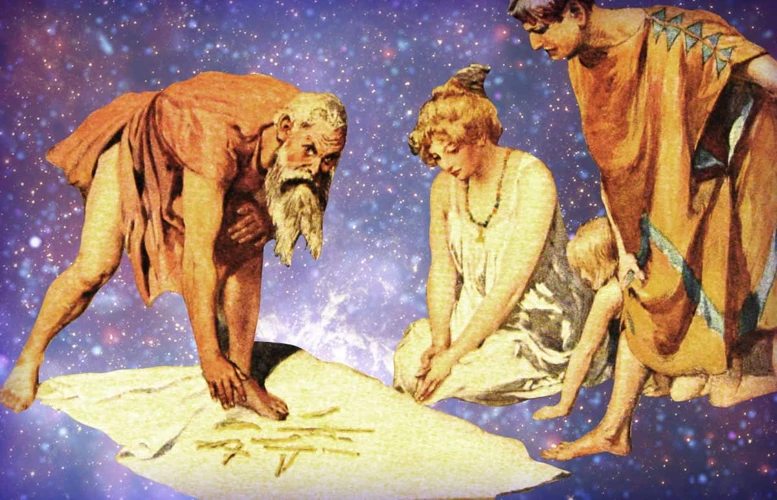
The mythological stories behind sacrifice in Mayan culture are woven with tales of gods, heroes, and cosmic battles. One such story is “The Tale of Xbalanque and Hunahpu,” which tells the epic journey of twin brothers who descended into the underworld to avenge their father’s death. In this tale, Xbalanque and Hunahpu face a series of trials and challenges, ultimately defeating the lords of the underworld and restoring balance to the world. The sacrifice in this myth is symbolic of the twins’ willingness to endure hardships and make offerings to the gods in order to fulfill their destiny. Another captivating story is “The Legend of Ixchel and Itzamna,” which chronicles the love between Ixchel, the goddess of the moon and fertility, and Itzamna, the god of creation and wisdom. In this myth, Ixchel sacrifices her place among the gods to be with Itzamna on Earth, representing a profound sacrifice for love and the continuation of life. These mythological stories, passed down through generations, serve as a reminder of the Mayan people’s deep connection to their gods, their understanding of the cyclical nature of life, and the significance of sacrifice in maintaining harmony between the earthly realm and the divine. [Link: /ophiuchus-symbol-serpent-wisdom-transformation/]
The Tale of Xbalanque and Hunahpu
The Tale of Xbalanque and Hunahpu is a captivating mythological story that sheds light on the significance of sacrifice in Mayan culture. The tale revolves around two heroic twins, Xbalanque and Hunahpu, who journeyed to the underworld, known as Xibalba, to avenge the death of their father. In their quest, the twins faced a series of daunting challenges set by the rulers of the underworld. These challenges included enduring trials of fire, water, and darkness, as well as engaging in ball games with the gods of Xibalba. Despite the hardships they faced, Xbalanque and Hunahpu ultimately emerged victorious. The tale highlights the sacrificial nature of their journey, as the twins faced great dangers and willingly offered themselves in order to restore order and honor their father’s memory. The story showcases the importance of sacrifice in Mayan mythology, where acts of selflessness and courage are intertwined with the complex tapestry of deities, spirits, and the divine realm. The tale of Xbalanque and Hunahpu serves as a reminder that sacrifice is not only a physical act, but also a symbolic one, representing the willingness to make profound personal sacrifices for the greater good. (Referring Link: “investigating interpretations constellation Leo”)
The Legend of Ixchel and Itzamna
The Legend of Ixchel and Itzamna is a captivating tale that has been passed down through generations in Mayan mythology. Ixchel, the goddess of the moon, fertility, and childbirth, was highly revered by the Mayan people. She was believed to have the power to bring rain and crops to sustain their civilization. Itzamna, on the other hand, was a major deity associated with creation, writing, and knowledge. In the ancient Mayan narrative, Ixchel and Itzamna were married, representing the merging of the moon and the sun, and the convergence of feminine and masculine energies. Together, they symbolized the cosmic balance and harmony that the Mayan people sought to maintain. According to the legend, Ixchel and Itzamna had numerous offspring who became the patron deities of various aspects of Mayan life. Their divine union also signified the interconnectedness of fertility, agriculture, and the spiritual realm. The myth of Ixchel and Itzamna serves as a reminder of the significance placed on fertility rituals and the celestial forces that played a pivotal role in Mayan mythology and daily life. To this day, the legend continues to inspire awe and reverence for the divine forces that shape the world we inhabit.
Mayan Rituals and Ceremonies
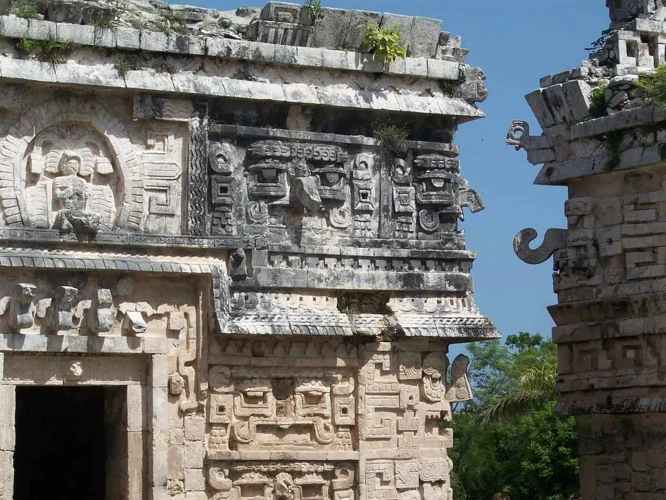
Mayan rituals and ceremonies were integral to their ancient civilization, encompassing a wide range of practices that honored their deities and sought to maintain balance in the cosmic order. These sacred rites were performed in various locations, including temples, pyramids, and sacred caves. The Mayans believed in the power of blood sacrifice, viewing it as a means of nourishing the gods and maintaining the cycle of life. They conducted elaborate ceremonies where individuals, often captives or volunteers, were ritually sacrificed, with their hearts being offered to the gods. These sacrifices were believed to ensure agricultural fertility, appease deities, and maintain harmony in the spiritual realm. Aside from blood sacrifice, the Mayans also engaged in ceremonies involving offerings of food, objects, and even self-mortification. They used intricate rituals to communicate with the gods, seeking guidance and protection in various aspects of life, such as agriculture, warfare, and the passage of time. The sacred calendar played a crucial role in determining the timing of these ceremonies, as the Mayans believed that certain days were more spiritually potent than others. During these rituals, priests would perform ceremonies involving chants, dances, and the burning of incense, creating an immersive sensory experience that connected them to the divine. These rituals and ceremonies were not only religious in nature but also served as a way to reinforce social cohesion and hierarchy within Mayan society. Through these practices, the Mayans sought to maintain a harmonious relationship with their deities and ensure the well-being of their community, believing that their actions had a direct impact on the balance of the spiritual world. (Source: unusual effects of eclipses in the Earth’s atmosphere)
The Sacred Calendar
The Sacred Calendar held immense significance in the Mayan spiritual world, guiding their rituals and ceremonies with precision and reverence. Known as the Tzolk’in, this calendar was composed of 260 days, each representing a unique combination of 20 day signs and 13 numbers. The day signs, such as Jaguar, Eagle, or Monkey, held symbolic meanings associated with specific qualities or deities. The numbers, ranging from one to thirteen, were believed to have distinct energies that influenced each day. The combination of a specific day sign and number created a unique energy and alignment within the calendar. The Mayans used the Tzolk’in to determine propitious dates for important events, such as coronations, marriages, and agricultural activities. They believed that each day had its own spiritual essence that could be harnessed through rituals and offerings. Additionally, the Tzolk’in intertwined with the Haab’, the solar calendar consisting of 365 days. Together, these calendars formed a complex and precise system for understanding the cyclical nature of time and its connection to the spiritual realm. The Sacred Calendar was not just a tool for timekeeping but a sacred pathway to communicate and connect with the gods, anchoring the Mayan people to their spiritual heritage and sustaining the harmonious balance between the earthly and celestial realms.
End of Cycle Celebrations
End of cycle celebrations held immense significance in Mayan culture, marking the completion of a major cycle in their sacred calendar. The Mayans believed that each cycle, known as a baktun, spanned approximately 394 years, and the end of a baktun was a momentous occasion. These celebrations were grand and elaborate, highlighting the Mayans’ deep connection with the celestial realm and their belief in cosmic order. During these festivities, the Mayans engaged in various rituals and ceremonies to honor the gods and ensure the continuation of the world. One of the most notable end of cycle celebrations was the end of the 13th baktun, which occurred on December 21, 2012. Contrary to popular belief, the Mayans did not prophesize the end of the world on this date, but rather celebrated the completion of a significant cycle and the beginning of a new one. These celebrations involved processions, music, dance, and the offering of sacrifices to appease the gods and maintain balance in the universe. The end of cycle celebrations were a testament to the Mayans’ deep spiritual connection and their profound understanding of the cyclical nature of time and existence.
The Essential Elements of End of Cycle Celebrations:
1. Processions: Processions played a central role in end of cycle celebrations, with individuals from all walks of life coming together to march through the streets of Mayan cities. These processions often included priests, nobles, and commoners, each carrying specific symbolic objects and performing ceremonial gestures.
2. Music and Dance: Music and dance were integral parts of these celebrations, with musicians playing various instruments such as drums, rattles, and flutes. Dancers adorned in elaborate costumes and masks performed intricate choreographies, depicting mythological stories and cosmic events.
3. Offerings and Sacrifices: Offering and sacrificing were crucial elements of end of cycle celebrations. The Mayans believed that sacrifices were necessary to sustain the balance between the earthly and divine realms. Animals, such as deer and birds, were often sacrificed, and their blood and body parts were offered to the gods as a gesture of gratitude and appeasement.
4. Astronomical Observations: The Mayans closely observed celestial events during these celebrations. They looked for astronomical phenomena, such as the alignment of planets or the appearance of specific constellations like Leo, to signify the beginning of a new cycle. These observations reinforced their belief in the interconnectedness of the cosmos.
5. Rituals and Ceremonies: Various rituals and ceremonies were performed during the end of cycle celebrations. These included purification rituals, blessings by priests, and the lighting of sacred fires. Mayan priests played a central role in guiding the people through these ceremonies and ensuring the proper execution of the rituals.
The end of cycle celebrations were a time of reflection, renewal, and reaffirmation of the Mayans’ spiritual connection with the cosmos. Through these elaborate festivities, the Mayans sought to maintain cosmic harmony and ensure the continued prosperity and existence of their civilization.
Pilgrimages and Temples
Pilgrimages and temples held immense significance in the Mayan spiritual world, serving as focal points for religious rites and practices. The Mayans would embark on arduous journeys to reach sacred sites, which were often situated in remote and spiritually significant locations. These pilgrimages were seen as acts of devotion and were undertaken to seek blessings, guidance, and to honor the gods. The temples themselves were awe-inspiring structures, built with meticulous attention to detail and aligned with astronomical phenomena. One prominent example is the Temple of Kukulkan at Chichen Itza, where the architectural design aligns with the equinoxes, creating the illusion of a serpent slithering down the temple’s steps. This alignment was believed to represent the serpent god, Kukulkan, descending from the heavens. The temples served as places of worship and sacrifice, and were often adorned with intricate carvings depicting mythological scenes and deities. These sacred spaces were considered the earthly homes of the gods, and their rituals were conducted within the temple complexes. Pilgrimages and temples were integral aspects of Mayan religious life, providing a physical and spiritual connection to the divine.
Archaeological Evidence of Sacrifice
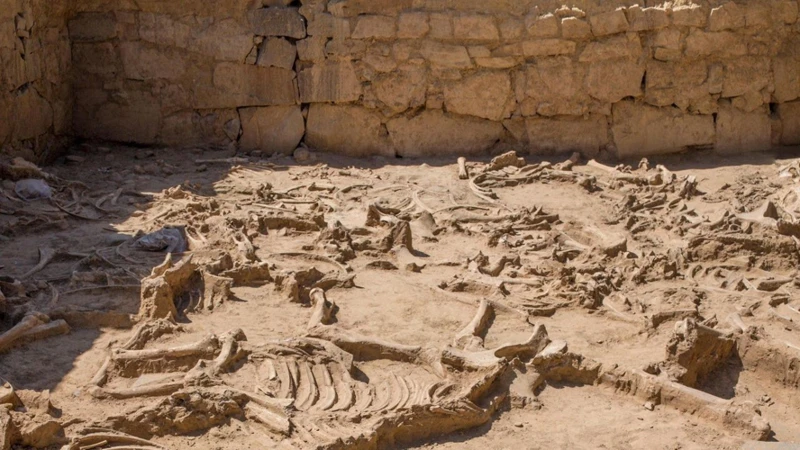
Archaeological evidence of sacrifice in Mayan civilization provides us with valuable insights into the rituals and practices of this ancient culture. Excavations of Mayan sites have unearthed numerous discoveries that shed light on their sacrificial traditions. One of the most notable findings is the presence of sacrificial cenotes, natural sinkholes or pools that were considered sacred. These cenotes served as sacred sites where offerings and sacrifices were made to appease the gods and maintain the balance of the universe. Human remains have been discovered in these cenotes, indicating that human sacrifice was a significant ritual practice. The victims, often prisoners of war or members of rival tribes, would be ceremonially dressed before being thrown into the cenotes as offerings to the gods. Apart from cenotes, other archaeological evidence includes sacrificial altars, where rituals would take place, and depictions on hieroglyphic inscriptions and murals portraying sacrificial scenes. The remnants of bloodletting rituals, where individuals would pierce their tongues, ears, or genitals to offer their own blood as sacrifice, have also been found. These archaeological findings affirm the integral role of sacrifice in Mayan society and provide a tangible link to their spiritual beliefs and practices. (source: (investigating-interpretations-constellation-leo) )
The Legacy of Mayan Rituals
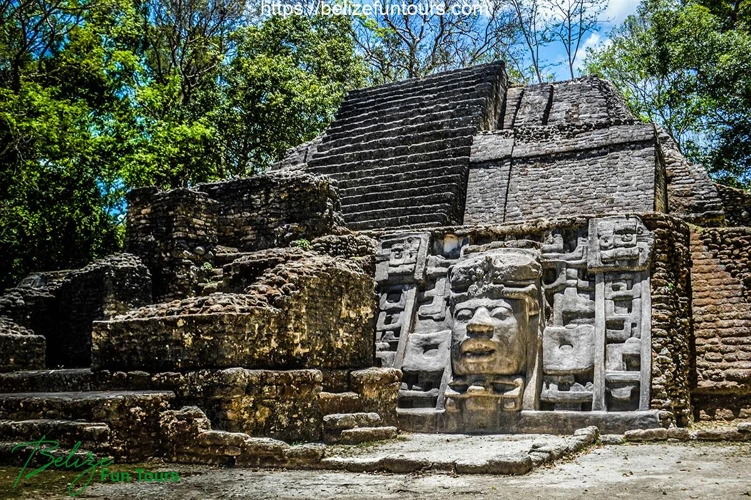
The legacy of Mayan rituals continues to resonate through time, leaving a profound impact on our understanding of ancient civilizations and their spiritual practices. These rituals were deeply ingrained in every aspect of Mayan life, shaping their societal structure, art, architecture, and religious beliefs. While the Mayan civilization may have declined, their rituals have left an indelible mark on the cultural landscape of Mesoamerica and beyond. The significance of their rituals can be seen in the meticulous planning and construction of temples and sacred spaces, such as the magnificent pyramids of Chichen Itza and Tikal. These structures served as physical embodiments of the Mayans’ connection to the divine and were used as focal points for ceremonies and offerings to the gods. Today, archaeologists continue to uncover the remnants of these grand rituals, providing invaluable insights into the spiritual practices of the Mayans. The legacy of Mayan rituals also extends to modern indigenous communities in the region who have preserved and adapted some of these ancient traditions. This cultural continuity serves as a testament to the enduring power and relevance of Mayan rituals in contemporary times. By studying and appreciating the legacy of Mayan rituals, we gain a deeper understanding of the complex and fascinating world of the ancient Mayan civilization. The mysteries and ceremonious allure of their rituals continue to captivate the imagination, inspiring further investigation and exploration of their intricate belief systems and cultural practices. (Link to anchor text: investigating interpretations of the constellation Leo)
Conclusion
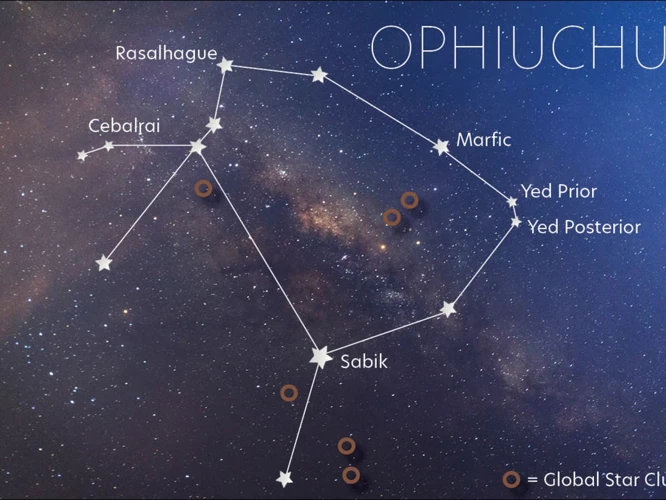
In conclusion, delving into the world of sacrifice and rituals in Mayan mythology has allowed us to uncover the intricate tapestry of beliefs and practices that formed the foundation of their ancient civilization. The Mayans exhibited a deep reverence for the spiritual realm, viewing it as intricately intertwined with the human experience. Sacrifice played a pivotal role in Mayan culture, with various types of sacrifices serving different purposes and symbolizing different aspects of their beliefs. Through meticulous rituals and offerings, the Mayans sought to maintain harmony with the gods, appease cosmic forces, and ensure the well-being of their community. Mythological stories provided insight into the significance of sacrifice, showcasing the interplay between deities, heroes, and mortals. The Mayans held elaborate ceremonies and pilgrimages, honoring their deities and seeking their favor. Archaeological evidence has shed light on the physical manifestations of these rituals, such as sacrificial altars and temple complexes. The legacy of Mayan rituals continues to influence and captivate us today, reminding us of the profound spiritual connections that humans have sought to forge throughout history. As we embrace the mysteries of the Mayan spiritual world, we gain a deeper appreciation for the complexity and depth of their civilization, and we are left in awe of the enduring wisdom that they have left behind.
Frequently Asked Questions

1. What were the core beliefs of the Mayan spiritual world?
The core beliefs of the Mayan spiritual world revolved around a complex cosmology that included thirteen heavens, nine underworlds, and a middle realm. They believed in the sacred connection between humans and maize, viewing agriculture as a divine act. Celestial bodies were also revered, and they believed in the cyclical nature of time.
2. How did the Mayans view celestial bodies?
The Mayans viewed celestial bodies as manifestations of deities and believed that they held great significance in their rituals and ceremonies. They meticulously observed and recorded the movements of the sun, moon, and planets, seeking divine communication and guidance from the heavens.
3. What role did the sacred calendar play in Mayan spirituality?
The sacred calendar played a crucial role in Mayan spirituality. It determined auspicious dates for ceremonies and rituals, aligning their actions with the cosmic order. The calendar was a testament to the Mayans’ deep understanding of celestial movements and their belief in the cyclical nature of time.
4. How did the Mayans communicate with the gods?
The Mayans believed they could communicate with the gods through various means. They offered prayers and sacrifices to seek favor and guidance from the divine. They also believed that celestial events, such as eclipses, held special significance and could serve as a form of communication from the gods.
5. What role did sacrifice play in Mayan culture?
Sacrifice held great importance in Mayan culture. It was seen as a way to appease the gods and maintain the cosmic balance. Sacrifices, both animal and human, were performed to ensure agricultural prosperity, divine protection, and the continuation of the cosmic order.
6. What types of sacrifices did the Mayans perform?
The Mayans performed various types of sacrifices, including offerings of food, jewelry, and other valuable items. Animal sacrifices were also common, with animals such as deer and birds being offered to the gods. In more extreme cases, human sacrifices were performed, often during significant ceremonies or in times of crisis.
7. What was the symbolism and purpose behind sacrifices?
The symbolism behind sacrifices in Mayan culture was twofold. First, sacrifices were seen as a way to give back to the gods and express gratitude for their blessings. Second, sacrifices were performed to maintain the cosmic order and ensure the well-being of the community. Sacrifices were considered acts of devotion and played a vital role in the Mayan worldview.
One example of a Mayan mythological story related to sacrifice is “The Tale of Xbalanque and Hunahpu.” This story recounts the heroic and sacrificial journey of the twin brothers as they face trials and challenges in the underworld. Another example is “The Legend of Ixchel and Itzamna,” which explores the sacrifices and transformations of the mythical deities.
9. What were some common Mayan rituals and ceremonies?
The Mayans engaged in a wide range of rituals and ceremonies. These included offerings and prayers for agricultural abundance, purification rituals, rites of passage for individuals transitioning through life stages, and ceremonies to align themselves with celestial events. Pilgrimages to sacred sites and temples were also a significant part of Mayan ritualistic practices.
10. What evidence of sacrifice can be found in Mayan archaeological sites?
Archaeologists have uncovered various artifacts and structures that provide evidence of sacrifice in Mayan culture. These include depictions of sacrificial scenes in murals, sculptures of deities associated with sacrifice, and sacrificial altars adorned with ritual objects. Human remains that bear signs of sacrifice have also been discovered, shedding light on the ancient rituals and customs of the Mayans.
References
- The Ancient Maya and Human Sacrifice
- Where and how did the Aztecs and Mayas learn the gory …
- maya – What did the Mayans hope to accomplish from ritual …
Frequently Asked Questions

What were the core beliefs of the Mayans?
The Mayans believed in a complex spiritual world that involved multiple gods and celestial beings. They believed in the cyclical nature of life and the importance of rituals and sacrifices to maintain the harmony of the universe.
What is the significance of sacrifice in Mayan culture?
Sacrifice was seen as a crucial aspect of Mayan culture, believed to appease the gods and ensure the well-being of the community. It was seen as a way to maintain balance and harmony in the cosmos.
What were the different types of sacrifices performed by the Mayans?
Mayans performed various types of sacrifices, including bloodletting, human sacrifice, and animal sacrifice. These sacrifices were carried out during rituals and ceremonies at temples and other sacred sites.
What was the purpose behind Mayan sacrifices?
The purpose of Mayan sacrifices was multi-fold. They were performed to honor the gods, seek divine favor, ensure agricultural fertility, celebrate important events, and provide spiritual nourishment to the gods.
What role did rituals and offerings play in Mayan culture?
Rituals and offerings were an integral part of Mayan culture, serving as a means to communicate with the gods and seek their blessings. They were considered acts of devotion and gratitude, playing a vital role in maintaining cosmic harmony.
What are the mythological stories associated with Mayan sacrifices?
There are several mythological stories associated with Mayan sacrifices. Some famous ones include “The Tale of Xbalanque and Hunahpu,” which tells the story of twin heroes and their journey to the underworld, and “The Legend of Ixchel and Itzamna,” which revolves around the love between two deities.
What was the significance of the sacred calendar in Mayan rituals?
The sacred calendar played a crucial role in Mayan rituals and ceremonies. It guided the timing of important events, such as religious festivals, agricultural practices, and sacrifices, ensuring they aligned with cosmic cycles and celestial events.
How did the Mayans celebrate the end of a cycle?
The Mayans celebrated the end of a cycle, such as the completion of a calendar round or a baktun, with grand festivities. These celebrations involved rituals, dances, feasting, and performances aimed at welcoming the new cycle and ensuring a prosperous future.
What was the significance of pilgrimages and temples in Mayan culture?
Pilgrimages and temples held great significance in Mayan culture. Pilgrimages allowed individuals to connect with sacred sites and seek divine blessings, while temples served as the physical and spiritual centers where rituals and sacrifices were conducted to maintain the cosmic order.
What evidence do we have today of Mayan sacrifices?
We have various archaeological evidence of Mayan sacrifices, including murals depicting sacrifice scenes, sacrificial objects, sacrificial pits, and skeletal remains showing signs of ritualistic practices. These findings provide insight into the religious and cultural practices of the ancient Mayans.







